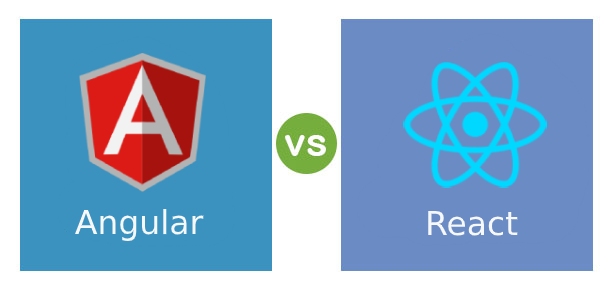The world has gone mobile, and businesses around the world are adapting to this trend by investing in mobile app development. With over 3.5 billion smartphone users worldwide, the demand for mobile apps is at an all-time high. However, developing a mobile app can be a daunting task, especially when it comes to choosing the right platform. React Native and Angular are two of the most popular frameworks for mobile apps development, and each comes with its unique set of advantages and disadvantages.
In this blog post, we will explore the world of mobile app development and provide you with a comprehensive guide on how to unleash the potential of React Native and Angular. From the basics of app development to the pros and cons of each framework, we’ll provide you with everything you need to know to master the art of mobile apps development.
Introduction to mobile app development and the popularity of React Native and Angular
Mobile app development has become an integral part of our digital world. With smartphones becoming an essential tool for communication, entertainment, and business, the demand for mobile applications has skyrocketed. As a result, developers are constantly seeking efficient and effective ways to create high-quality apps that cater to the ever-evolving needs of users.

Two frameworks that have gained immense popularity in the realm of mobile app development are React Native and Angular. These frameworks offer developers the ability to build cross-platform applications, meaning a single codebase can be used to create apps for both iOS and Android platforms. This not only saves time but also reduces the overall development cost.
Understanding the basics of React Native and Angular frameworks
Before diving into the world of mobile app development with React Native and Angular, it is crucial to have a solid understanding of the basics of these frameworks. React Native is a popular open-source JavaScript framework developed by Facebook, which allows developers to build mobile apps using only JavaScript.
It combines the power of React, a JavaScript library for building user interfaces, with the advantages of native app development.
Exploring the advantages and disadvantages of React Native and Angular for mobile app development
When it comes to mobile app development, two popular frameworks that often come up in discussions are React Native and Angular. Both frameworks offer unique advantages and disadvantages that developers need to consider before embarking on their app development journey. React Native, developed by Facebook, allows developers to build mobile apps using JavaScript.
One of the biggest advantages of React Native is its ability to create cross-platform apps, meaning a single codebase can be used to develop apps for both iOS and Android platforms. This not only saves time and effort but also ensures consistency across different devices. Additionally, React Native comes with a rich set of pre-built components and libraries, making it relatively easy to develop intuitive and visually appealing user interfaces.
Getting started with React Native: Setting up the development environment
Setting up the development environment is the first step towards mastering the art of mobile app development with React Native. Before diving into the world of React Native, it is essential to ensure that your development environment is properly configured, enabling a seamless coding experience. To begin, you will need to have Node.js installed on your system.
Node.js is a JavaScript runtime that allows you to run JavaScript on the server side. It provides the necessary tools and packages required for React Native development. You can easily download and install Node.js from the official website, following the installation instructions specific to your operating system.
Building a basic mobile app using React Native
Building a basic mobile app using React Native can be an exciting endeavour. React Native, a popular framework developed by Facebook, allows developers to build cross-platform mobile applications using JavaScript. With its easy-to-learn syntax and powerful features, React Native has gained immense popularity in the mobile app development community.
Leveraging the power of Angular for mobile app development: Setting up the development environment
Setting up the development environment is the crucial first step in leveraging the power of Angular mobile app development. Angular provides a robust framework that enables developers to build high-performance, scalable, and feature-rich mobile applications.

To begin, ensure that you have Node.js installed on your system. Node.js is a prerequisite for Angular development. Once installed, you can use the Node Package Manager (npm) to install Angular CLI (Command Line Interface). The Angular CLI is a powerful tool that simplifies the development process by providing a set of commands for creating, building, and testing Angular applications.
Creating a mobile app with Angular: A step-by-step guide
Creating a mobile app with Angular can be an exciting and rewarding journey. Angular, a popular JavaScript framework, offers a robust and efficient way to develop cross-platform mobile applications. In this step-by-step guide, we will walk you through the process of creating a mobile app using Angular and unleashing its potential.
Step 1: Set up The Development Environment
Before diving into app development, it is essential to set up your development environment. Install Node.js and npm (Node Package Manager) to manage dependencies. Use Angular CLI (Command Line Interface) to scaffold your project and generate the necessary files and components.
Step 2: Plan Your App Structure and Features
A well-structured app is crucial for scalability and maintainability. Define the core features and functionalities you want to incorporate into your app. Create a wireframe or design mockup to visualise the app’s layout and user interface.
Step 3: Create The Spp Components
In Angular, components are the building blocks of your app. Each component represents a specific section or functionality. Start by creating the main component, such as the app component, and then break it down into smaller components as needed. Use Angular’s templating and data-binding features to create dynamic and interactive UI elements.
Step 4: Implement Data Management and Services
Data management is a crucial aspect of any mobile app. Angular provides a powerful feature called services that allows you to handle data retrieval, manipulation, and storage. Create services to fetch data from APIs, handle user authentication, and manage local storage.
Step 5: Navigation and Routing
Smooth navigation is key to a user-friendly mobile app. Configure the app’s routing module to define the different routes and navigation paths. Use Angular’s router module to handle navigation between components and display the appropriate content based on the user’s actions.
Step 6: Styling and Theming
Enhance the visual appeal of your app by applying styles and themes. Angular offers various options for styling, including CSS, SCSS, and CSS frameworks like Bootstrap. Utilize Angular’s built-in styling techniques, such as component-specific styles or global stylesheets, to create a cohesive and visually pleasing app design.
Step 7: Testing and Debugging
Thoroughly test your app to ensure it functions as intended. Use Angular’s testing framework, such as Jasmine and Karma, to write unit tests for your components and services. Debug any issues or errors using Angular’s developer tools, such as the Chrome DevTools extension or Angular’s built-in debugging capabilities.
Step 8: Build and Deploy Your App
Once you have thoroughly tested your app, it’s time to build and deploy it. Angular provides various options for building your app, such as using the Angular CLI to generate optimized production builds. Deploy your app to platforms like the web, iOS, or Android using tools like Firebase Hosting or Cordova.
By following these steps, you can create a powerful and feature-rich mobile app using Angular. Remember to leverage Angular’s extensive documentation and vibrant community for additional support and guidance. Get ready to unleash the potential of Angular and embark on your journey of mastering the art of mobile apps development.
Comparing React Native and Angular for mobile app development: Performance, cross-platform compatibility, and user experience
When it comes to mobile app development, choosing the right framework is crucial to ensure optimal performance, cross-platform compatibility, and a seamless user experience. Two popular options that are widely used in the industry are React Native & Angular. React Native, developed by Facebook, is a powerful JavaScript framework that allows developers to build native mobile apps using a single codebase.
One of the key advantages of React Native is its exceptional performance. By leveraging native components, React Native apps can deliver high speed and responsiveness, giving users a smooth and fluid experience. Additionally, React Native allows for hot reloading, enabling developers to see instant changes in the app during the development process.
Best practices and tips for optimising mobile app development with React Native and Angular
Optimising mobile apps development with React Native and Angular requires following best practices and implementing effective tips. By doing so, developers can unleash the full potential of these powerful frameworks and deliver exceptional mobile applications.

Keep the codebase clean: Writing clean and organised code is crucial for efficient development. Following coding conventions, utilising modular components, and maintaining a consistent structure will enhance readability and make debugging easier.
Utilise reusable components: One of the key advantages of React Native and Angular is their ability to create reusable components. By leveraging these components, developers can save time and effort in coding repetitive elements, ensuring consistency and scalability across the app.
Conclusion: Harnessing the potential of React Native and Angular to create powerful and feature-rich mobile apps
In conclusion, harnessing the potential of React Native and Angular can truly elevate your mobile app development process. These two powerful frameworks offer a myriad of benefits, allowing you to create robust, feature-rich, and highly performant mobile applications. React Native, with its ability to build cross-platform apps using a single codebase, provides developers with the advantage of time and cost efficiency.
It allows for seamless integration of native components, resulting in a native-like user experience across multiple platforms. With a vast library of pre-built components, React Native empowers developers to create visually stunning and responsive apps. On the other hand, Angular brings a comprehensive set of tools and features to the table. Its modular architecture enables developers to build scalable and maintainable applications.
With Angular’s extensive ecosystem and support, developers can easily implement features like routing, form validation, and dependency injection. Additionally, Angular’s use of TypeScript offers enhanced code quality, static typing, and improved developer productivity.



